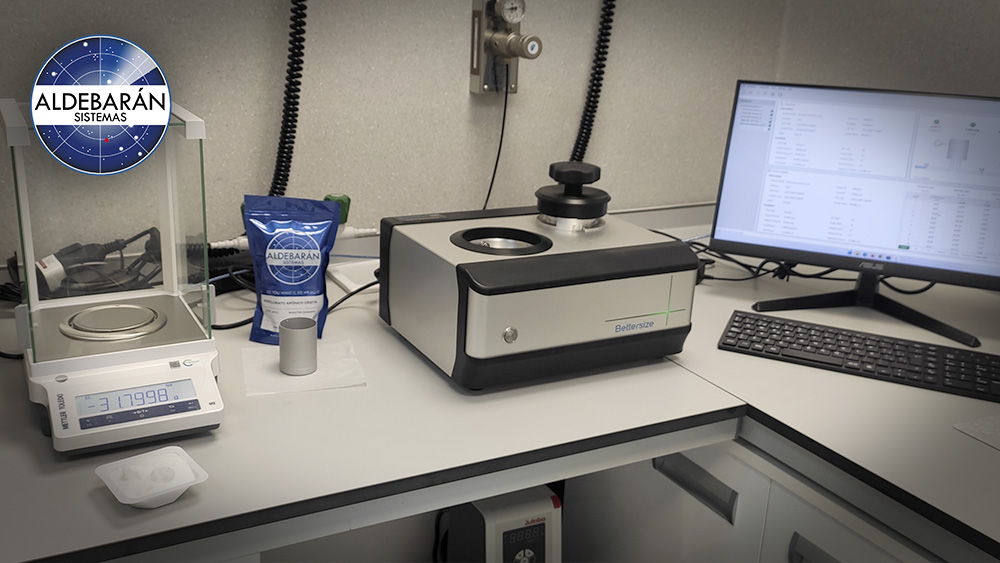Last June we announced the acquisition of a helium densimeter for our laboratory, a device that allows us to determine the REAL density of each of our products in all their granulometries.
Now, installed in room 2 of the Chemical Area of our laboratory, we can demonstrate its operation and possibilities.
What is the working procedure?
The procedure followed to analyze the samples and determine the actual density of the product (once the equipment and temperature have been stabilized) is as follows:
- The sample glass is tared on the analytical balance.
- The sample is weighed by filling the sample glass. The analytical balance is connected to the densimeter, so the equipment shows us the weight of the sample on the screen, thus eliminating the risk of transcription errors.
- The sample glass with the product is introduced into the densimeter.
- The densimeter first performs a series of purges of the system.
- Next, it determines the pressure of the sample glass with helium once the helium has been incorporated.
- The next step is to release this helium into a cell with a known volume.
- The difference between these values allows us to calculate both the volume of the sample and its REAL DENSITY.
Below is a video in which you can see the procedure for calculating the density of the product with our equipment.

This technology provides high-precision real density values and is also a non-destructive test.
And, how does the equipment work?
As we already mentioned in our June article (read here), the measurement principle of Helium pycnometry is based on the principle of gas expansion and Boyle’s law. The solid sample is introduced into a measuring cell and a pressure of Helium gas is applied, in this way the gas will enter all the pores and gaps of the sample. The pressure value is recorded and measured with a transducer. Next, a valve is opened and the gas is allowed to expand until it fills a pre-calibrated expansion volume. As the gas expands, the pressure logically decreases and is measured again with the same transducer.
By applying Boyle’s Law at constant temperature, the free space in the measuring cell is determined, and therefore the real volume occupied by our sample can be measured. The density is calculated from the mass and the real volume.
This technology provides high-precision real density values, with 3 or 4 decimal places, and is also a non-destructive test.
Aldebarán Sistemas: so you want it, so we do it.

